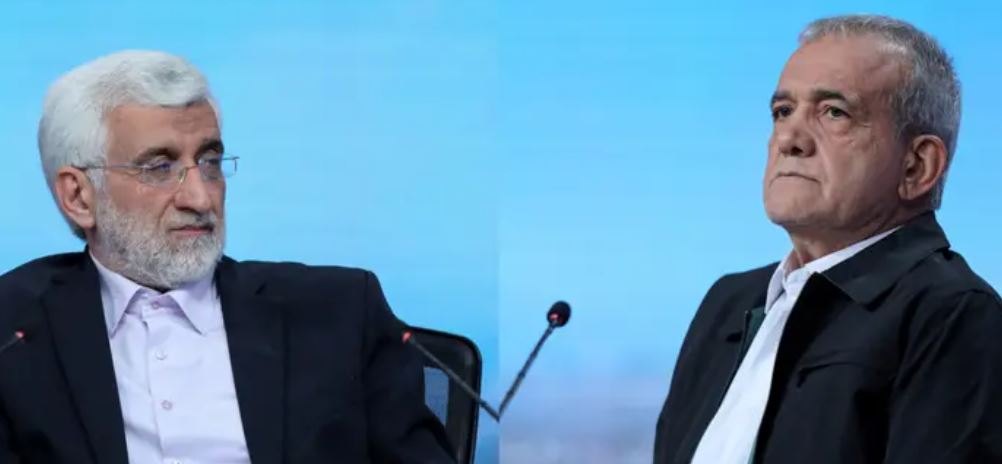Voter Apathy and Political Stakes
In the lead-up to Iran’s crucial presidential run-off election, the nation’s political landscape is starkly divided, with candidates struggling to mobilize a disillusioned electorate. Voter apathy looms large as Iranian citizens prepare to choose between a zealous anti-Westerner and a low-key moderate, both of whom are grappling to win over millions of disengaged voters on July 5.
Historic Low Turnout
The June 28 ballot, meant to determine a successor to the late President Ebrahim Raisi, saw an unprecedented voter abstention rate, with over 60% of eligible voters refraining from casting their ballots. This historic low turnout is perceived by many critics as a resounding vote of no confidence in the Islamic Republic, further complicating the political climate ahead of the run-off election.
The Candidates: Pezeshkian vs. Jalili
The electoral battle pits lawmaker Massoud Pezeshkian, the sole moderate candidate, against Saeed Jalili, a former Revolutionary Guards member known for his hawkish stances. Both candidates have delineated contrasting visions for Iran’s future, with Jalili advocating stringent foreign and domestic policies, while Pezeshkian calls for greater social and political freedoms. Both, however, pledge to rejuvenate an economy beleaguered by mismanagement, corruption, and sanctions imposed since 2018 over Iran’s nuclear ambitions.
The Importance of Voter Turnout
For Iran’s clerical establishment, securing a high voter turnout is paramount for maintaining legitimacy. This need is amplified by escalating regional tensions, particularly the conflict between Israel and Iran’s ally Hamas in Gaza, and heightened Western scrutiny over Iran’s nuclear program. Nevertheless, recent years have seen a growing trend of electoral abstention, with record low participation rates in parliamentary elections and the previous presidential election.
A Clash of Visions
According to Ali Vaez of the International Crisis Group, the run-off represents “a clash of visions: Jalili’s hardline ideology versus Pezeshkian’s call for essential moderation and change.” Beyond competing against Jalili, Pezeshkian faces the formidable task of overcoming voter apathy and mobilizing the silent majority critical to his success.
Supreme Leader’s Influence
Despite the election’s significance, the next president is not expected to implement major policy shifts regarding Iran’s nuclear program or its support for militia groups across the Middle East, as Supreme Leader Ayatollah Ali Khamenei retains ultimate authority over these matters. However, the president can significantly influence the tone and direction of Iran’s domestic and foreign policy.
Potential Outcomes and Implications
Pezeshkian’s victory could signal a pragmatic approach to foreign policy, potentially easing tensions over stalled nuclear negotiations with global powers and fostering social liberalization and political pluralism. Conversely, a win for Jalili might herald an era of heightened antagonism in both domestic and international arenas.
The Role of the Youth Vote
To secure victory, Pezeshkian must not only attract moderate conservative voters who previously supported hardline parliament speaker Mohammad Baqer Qalibaf but also galvanize Iran’s predominantly young population, disillusioned by political and social constraints. The challenge is daunting, as many young Iranians have abstained from voting in recent elections.
Reformist Support and Voter Sentiment
Pezeshkian’s campaign, backed by the sidelined reformist faction, primarily hinges on the strategy of averting a worse outcome under Jalili’s potential presidency. This sentiment is echoed by Mehrshad, a 34-year-old teacher in Tehran, who stated, “I will vote this time … because Jalili’s presidency means more restrictions … This is choosing between bad and worse.”
Opposition and Boycott Calls
Despite these efforts, many reform-minded Iranians remain skeptical of Pezeshkian’s ability to instigate significant change, given his establishment ties. Farzaneh, a university student from Yazd, expressed her disillusionment, saying, “Pezeshkian is part of the establishment. He will follow Khamenei’s orders … Let the world know that Iranians do not want the Islamic Republic, I will not vote.” Additionally, opposition groups have called for an election boycott, promoting the hashtag #ElectionCircus on social media platform X.
Conclusion
As Iran approaches the pivotal run-off election, the nation stands at a crossroads, with its future direction hinging on the outcome of a contest marked by profound voter apathy and divergent visions. Whether the electorate will mobilize to support either candidate remains uncertain, but the implications of their choice will resonate far beyond the immediate political horizon, shaping Iran’s trajectory in an increasingly complex and contentious global landscape.
Summary of Key Learning Points
| Key Learning Points |
|---|
| Iranian presidential candidates struggle with voter apathy. |
| June 28 ballot saw over 60% voter abstention, signaling low confidence. |
| Massoud Pezeshkian and Saeed Jalili present contrasting visions. |
| High voter turnout is crucial for clerical establishment’s legitimacy. |
| Supreme Leader Khamenei retains control over major policy decisions. |
| Pezeshkian’s victory may ease tensions and promote moderation. |
| Jalili’s win could lead to more antagonistic policies. |
| Young voters and moderate conservatives are critical for Pezeshkian. |
Soumya Smruti Sahoo is a seasoned journalist with extensive experience in both international and Indian news writing. With a sharp analytical mind and a dedication to uncovering the truth, Soumya has built a reputation for delivering in-depth, well-researched articles that provide readers with a clear understanding of complex global and domestic issues. Her work reflects a deep commitment to journalistic integrity, making her a trusted source for accurate and insightful news coverage.



